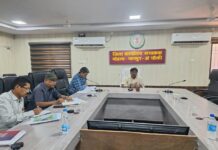Imagine yourself to be an architect who has been given the task of planning a whole city. Take a few seconds and think about all the aspects you would possibly consider, all the questions that will come to your mind to give direction to your planning and achieving the task at hand. Some of the basic things you would possibly think of would be the look of the city, how to attain ease of mobility, planning of roads and intersections to make the city better connected and accessible, civic rules you want people to follow, strategy for providing basic commodities to your inhabitants, and the like.

There can be innumerable questions to which you will seek answers and try to find solutions to; things you might never that thought of or considered at all before you were asked to do this, even though we experience these resources and means EVERYDAY by virtue of living in a city ourselves. THAT is the power of projects. The big and small questions around ‘creating’ have immense power to drive learning, instill deep knowledge and develop skills. Giving projects to children helps them apply the concepts they have learnt, in real life situations and test their applicability. It also helps them make connections between various things they have learnt across all their subjects instead of looking at each subject in isolation. It helps them learn important skills such as team work and problem solving. THIS is called project-based learning.
There is a belief that projects are external to the curriculum and are only meant as a fun exercise. This may not be entirely true as projects are a MEANS of teaching and how this tool is used will determine if it is linked to the curriculum or is an extra activity. Projects can be weaved with the concepts and lessons being taught in class for them to be more meaningful in the context of the defined curriculum.
Taking the above example of designing a city, the fact that students have to plan the roads of the city, they get a chance to apply skill of measurement, number sense, conversions to calculate the length of the roads. To ensure one road should be bigger than the other, they need to find out the ratios of two or more roads so that they can decide the length of the roads as per the maps. Many more concepts of Maths can be mapped to the project as per the need of the class.
Trying to figure out the rules people need to follow, will help children reflect on and think deeply about the civic rules around them concerning hygiene, pollution, crime, justice system etc. It will also help build the character of students when they work around the problems related to crime and how to induce positive behaviour among the inhabitants of the city in order to reduce crime.
Thinking about the different places in the city and planning maps around it can improve the students’ power of understanding navigation, which is usually part of geography.
As it can be seen, project-based learning has the capability to not just integrate objectives across various subjects but also an opportunity for students to apply their theoretical learning into a practical situation, which leads to a deeper understanding of the concept as well as skill development. Along with subject knowledge and skill building, another major aspect of project building is working with peers. When students work together, they get introduced to varied perspectives and develop higher levels of tolerance for differences in opinion. The values which are taught to students explicitly can be learned easily when working in a group.
Thus, introducing project based learning as a tool for teaching can prove to be exceptionally helpful in enhancing the learning process and the overall development of students.















